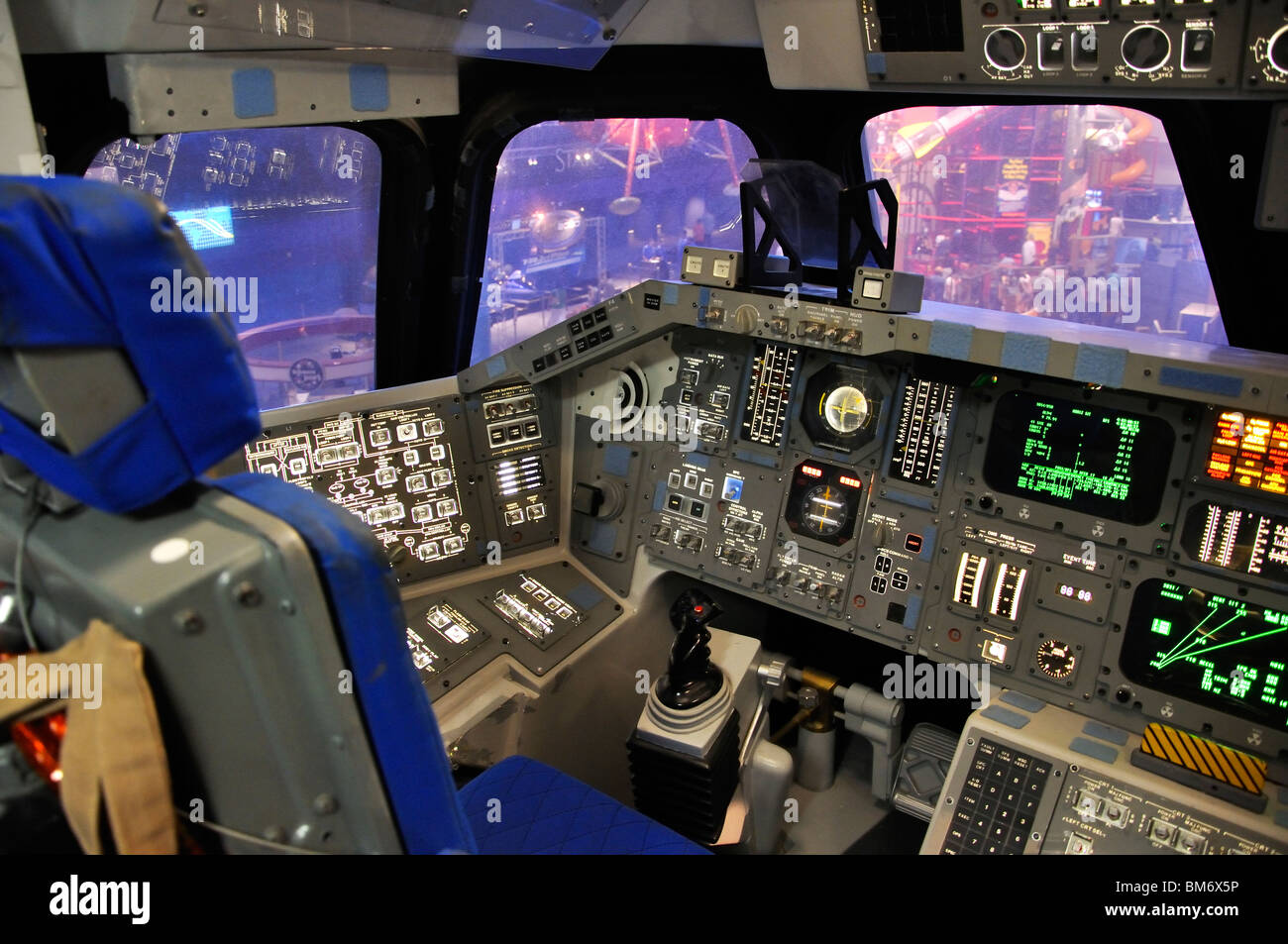
The Early Space Exploration houses several displays of artifacts, among them is the Gemini 9A spacecraft as well as a recreation of the Mercury Control Center using consoles and furniture relocated from the original building at Cape Canaveral Air Force Station.

Elsewhere on the Visitor Complex grounds is the foundation's Center for Space Education, which includes a resource center for teachers, among other facilities and the Kurt Debus Conference Center. The most visible of these is the Space Mirror Memorial, also known as the Astronaut Memorial, a huge black granite mirror through-engraved with the names of all astronauts who died in the line of duty. The Visitor Complex includes two facilities run by the Astronauts Memorial Foundation. Mercury Control consoles in the Debus Center, removed before the original building was demolished The tour formerly included the Space Station Processing Facility (SSPF) where modules for the International Space Station were tested.

One simulates the environment inside an Apollo firing room during an Apollo launch, and another simulates the Apollo 11 Moon landing. Two theaters allow the visitor to relive parts of the Apollo program. The Apollo/Saturn V Center, located 6 miles ( Template:Convert/round km) north, is a large museum built around its centerpiece exhibit, a restored Saturn V launch vehicle, and features other space related exhibits, including an Apollo capsule. It also includes admission to the Astronaut Hall of Fame, 6 miles ( Template:Convert/round km) to the west. Included in the base admission is tour-bus transportation to an observation platform at Launch Complex 39, which provides unobstructed views of both launch pads and the surrounding KSC property, and the Apollo/Saturn V Center. Attractions Īerial view of the Visitor Complex (the Apollo/Saturn V Center is out of frame) in May 2013 NASA renewed the contract with Delaware North Companies through May 2020 with options to extend the contract through 2030. Since then, the facility has been entirely self-supporting and receives no taxpayer or government funding. In 1995, Delaware North Companies was selected to operate the visitor center.
#MUSEUM NASA FLORIDA UPGRADE#
Later that year, a $2.3 million upgrade of the visitor complex was begun with added focus on the benefits of space exploration along with the existing focus on human space exploration.

Existing displays were largely made up of trade show exhibits donated by NASA contractors. When nearby Walt Disney World opened in 1971, visitors center attendance increased by 30 percent, but the public was often disappointed by the comparative lack of polish at KSC's tourist facilities. Even during the gap between the Apollo and Space Shuttle programs, attendance remained at over one million guests and it ranked as the fifth most popular tourist attraction in Florida. Spaceport USA, as it was soon titled, hosted 500,000 visitors in 1967, its first year, and one million by 1969. Debus was authorized to spend $2 million on a full-scale visitors center. By 1964, more than 250,000 self-guided car tours, permitted between 1 and 4 p.m. The complex had its beginning in the 1960s in a small trailer containing simple displays on card tables. Gate to the KSC Visitor Complex in 2006 Explorer, a mock-up of the Space Shuttle, is in the background.


 0 kommentar(er)
0 kommentar(er)
